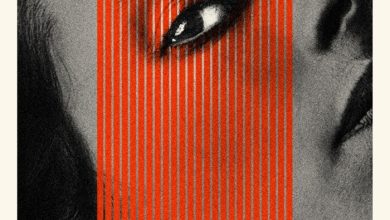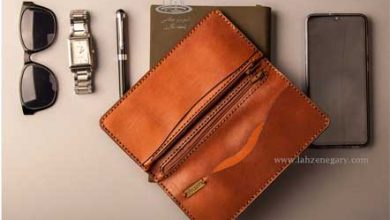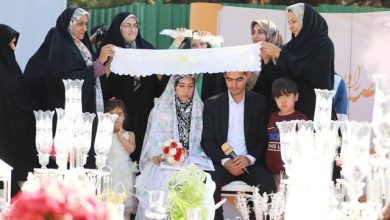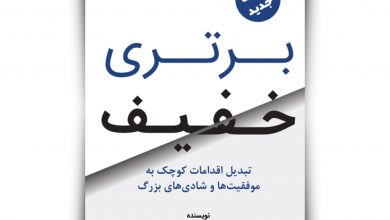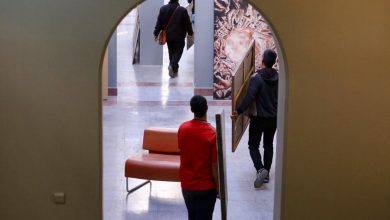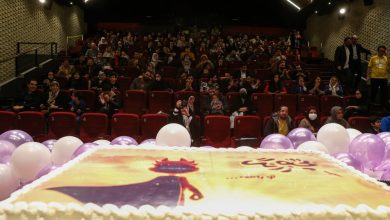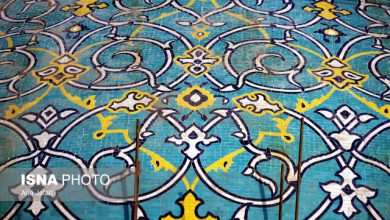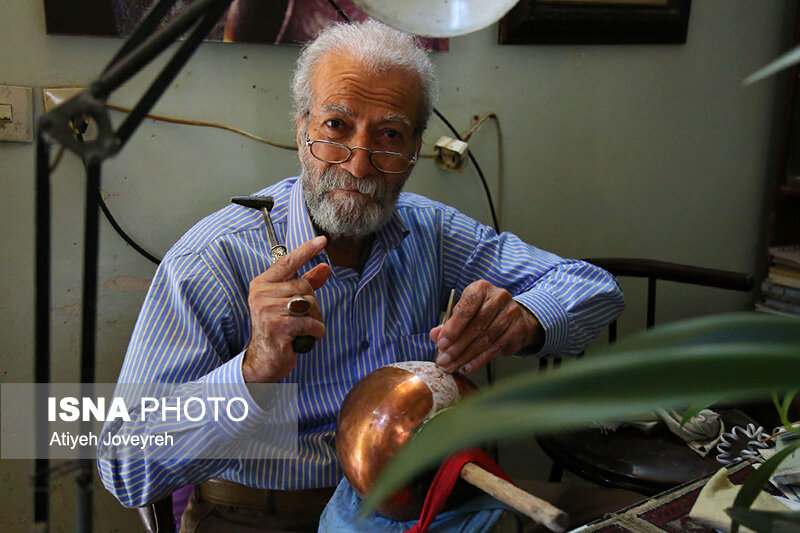

Informants / Isfahan Zindad of Ali Zarifi nicknamed Nahas “the dervish of metals” because he is very malleable and he believed that “I love this metal and this metal loves me.” “Copper is like a mother who holds her child’s hand and teaches him to walk.”
Ali Zarifi Isfahani was born on May 2, 1315 in the Isfahan district mosque. He started calligraphy at the age of four with Master Taghi Pashutan at Haji Alinagi Caravanserai, and became independent at the age of ten. During his 7-decade calligraphy career, he became a designer in two sections, curling and etching. The technique of “moving metal on metal” in engraving is also the invention of Ustad Ali Zarif, who in this way, using a pen and hammer, transfers the metal from other parts in a tensile manner to a presumably certain point to be highlighted, and then creates the design.
Another feature of his works is the repetition and emphasis on the characteristics of “liberation” and “order”, the first showing itself mainly in the vines and leaves of hair, and the second in the latticework and slime motifs. Ali Zarifi al-Isfahani’s works generally include plant, human and mixed motifs, and in terms of technique, his works can be divided into three categories: “latticed work”, “patterned work” and “metal movement on metal”. Three categories of “vines” can be categorized as “slimes” and “works of visual narrative”.
What stands out in the group of vines are the figures of grapes, leaves and vines, and the main linguistic function or the main message of the group of vines is “divine love”, which requires patience and refinement of the soul to reach it. According to the interpretation of the artist himself, the grape is a symbol of the tree, and the vine is a metaphor for the person, especially for the artist, and Al-Zuraifi says about this: “The artist is like a vine; from the time it emerges until it falls from under the feet of passers-by, crushing its bones.” In the slime group, there are a variety of slime types (such as Mary Slime, torpedo mouth slime, slime with different guitars, and hard and hollow slime) and the main linguistic function of this group is “unity”. What has been highlighted in the works of this group is the role of plants, arrangement, geometry, mathematics, connection, interdependence, repetition, movement, symmetry, abstraction, and unity in the same multiplicity. The works included in the group “Works of Visual Narratives” include single characters or representational images that tell a story or a story. Pictures in which people and animals stand while worshipers pick and ferment grapes.
“Nature” is one of the main sources of inspiration for Professor Ali Zarifi, and “improvisation” is one of the characteristics of his works. Zarifi clearly believes that “design should be done in the workplace.” He considered art to be a mixture of “existence”, “non-existence” and “liberation” and in some sense he considered the letter “h” to be derived from existence, “n” to be derived from non-existence, and “r” to be derived from liberation, and from a mystical point of view he considered God is the greatest teacher and artist He said: The only artist is God. God created everything and we discover it.” In Professor Zarifi’s view, “art means creation,” he emphasized the message of the artwork and considered another characteristic of art to be “art commitment,” which means that art must deal with the concerns and issues of the day.
Professor Zarifi called copper “the dervish of metals” because it is very malleable and said “I love this metal and this metal loves me too.” Copper is like a mother who holds her child’s hand and teaches him to walk.
Ali Zarifi Isfahani, known as the creator of calligraphy, died on October 22, 1401 and was buried in the famous plot of land in the Ridvan Garden in Isfahan.
Mohammad Reza Darari, Vice President of the Isfahan Cultural Branch of Academic Jihad
the end of the letter
